articles
FAMINES during British Rule
Published
6 years agoon
By
ihar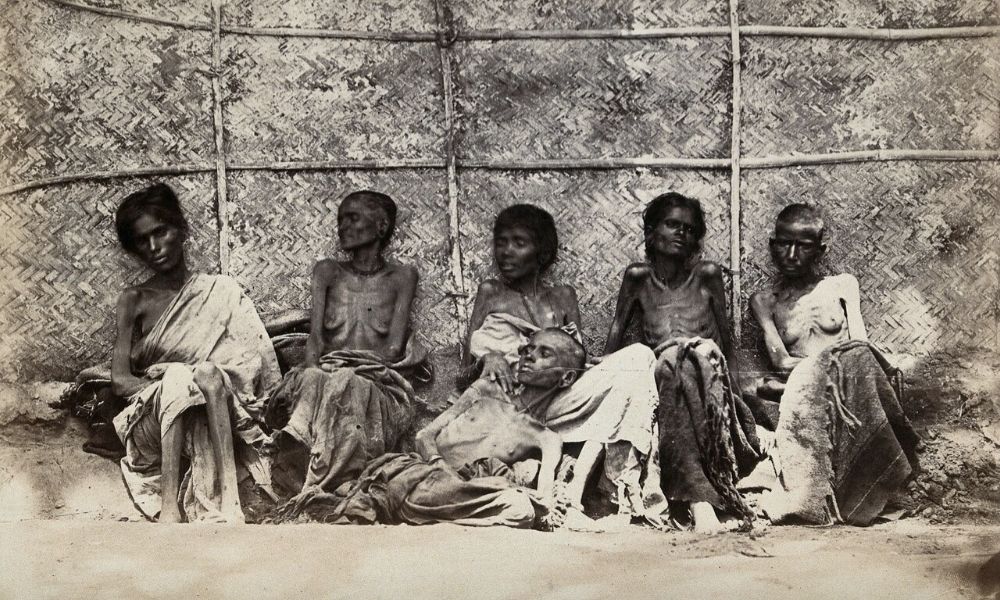
Author: Dr. Jayakumar Srinivasan
Press Release: https://www.esamskriti.com/e/History/Indian-History/Famines-During-British-Rule-1.aspx
More than 50 million died in famines during British rule, yet many school text books do not mention about them, or say thousands died. Read all about the famines.
To read the same article in Tamil please click on PDF.
Our team was asked by a State Government SCERT Textbook Board to review 6 to 8 standard Social Sciences textbook. We made many recommendations for change of content. The State adopted about half of those suggestions. Let us look at one example.
In the context of the Zamindari system, take a look at the following extract from the 8th standard textbook 1
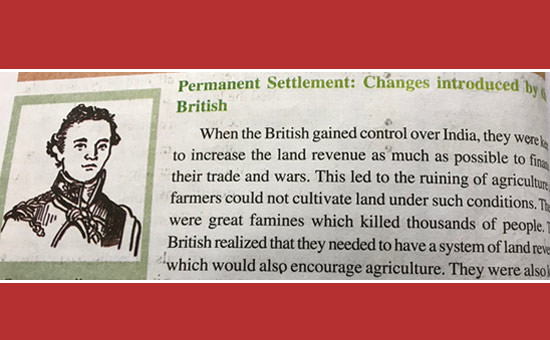
It is true that the British policies ruined our agricultural system. But let us draw our attention to the sentence “There were great famines which killed thousands of people”.
A famine is a situation where there is an extreme scarcity of food, especially grains. Many of us many not have had a first hand-experience of a famine because the last famine was in 1943. However, much research has been done on the study of famines in India, especially during the colonial period.
In an important book Late Victorian Holocausts 2, summarized by Fred Magdoff 3, Mike Davis mentions that there were 17 famines in the 2,000 years before British rule. In comparison, in the 120 years of British rule, there were 31 serious famines. Davis argues that the seeds of underdevelopment in what later became known as the Third World were sown in this era of High Imperialism, as the price for capitalist modernization was paid in the currency of millions of peasants’ lives. This fact should impel us to understand the British role in creating intense famines in India.
Here is a list of some major famines during British rule in India. 4
| Year | Name | Region | Deaths | Comment |
| 1769–70 | Great Bengal Famine | Bihar, Northern and Central Bengal | 10 Million | About one third of the then population of Bengal |
| 1783–84 | Chalisa famine | Delhi,UP, Punjab,Rajasthan, Kashmir | 11 Million | Severe famine. Large areas were depopulated. |
| 1791–92 | Doji bara famineorSkull famine | Hyderabad,Central India,Deccan,Gujarat, Southern Rajasthan | 11 Million | One of the most severe famines known. People died in such numbers that they could not be cremated or buried. |
| 1860–61 | Upper Doab | Rajasthan | 2 Million | |
| 1865-67 | Orissa famine | Bihar, Orissa, Parts of Southern India | 1 Million | The British Secretary of State for India, Lord Salisbury, did nothing for two months, by which time a million people had died |
| 1868–70 | Rajputana famine | Rajasthan | 1.5 Million | |
| 1876–78 | Great Madras Famine | Mysore and Hyderabad States (Madras Presidency) | 6-10 Mil | |
| 1896–97 | Indian famine | Rajasthan, parts of Central India and Hyderabad | 5 Million | |
| 1943–44 | Bengal famine | Bengal | 3.6 Million | 1.5 from starvation; 2.1 from epidemics. |
In an 1883 Volume on Rural Bengal 5, W. Hunter gives a vivid and disturbing picture of the 1770 Bengal Famine, “All through the stifling summer of 1770 the people went on dying. The husbandmen sold their cattle; they sold their implements of agriculture; they devoured their seed-grain; they sold their sons and daughters, till … no buyer of children could be found; they ate the leaves of trees and the grass of the field; and in June, 1770, the Resident at the Durbar affirmed that the living were feeding on the dead.
Day and night a torrent of famished and disease-stricken wretches poured into the great cities. …pestilence had broken out. … we find small-pox at Moorshedabad, … The streets were blocked up with … heaps of the dying and dead. … even the dogs and jackals, the public scavengers of the East, became unable to accomplish their revolting work, and the multitude of mangled and festering corpses at length threatened the existence of the citizens.
Starving and shelter less crowds crawled despairingly from one deserted village to another in a vain search for food, or a resting-place in which to hide themselves from the rain. The epidemics incident to the season were thus spread over the whole country; … Millions of famished wretches died in the struggle to live … their last gaze being probably fixed on the densely-covered fields that would ripen only a little too late for them…”
About a quarter to a third of the population of Bengal starved to death in about a ten-month period. In 1865–66, severe drought struck Odisha and was met by British official inaction.
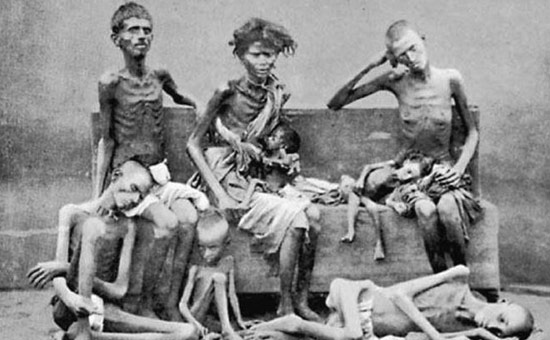 Victims pictured in 1877 Reference 4.
Victims pictured in 1877 Reference 4.
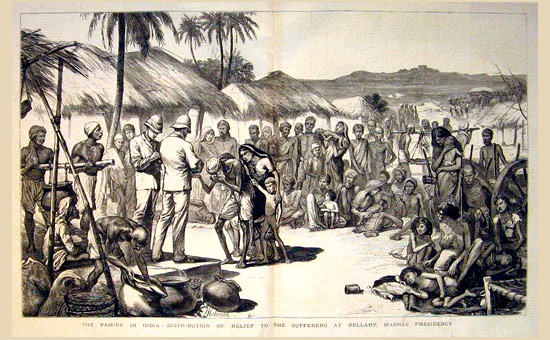 Relief Distribution in Bellary Reference 4. Great Famine 1876 to 78.
Relief Distribution in Bellary Reference 4. Great Famine 1876 to 78.
An important work to understand the role of British during the period 1939-45 (World War II), is Madhusree Mukerjee’s book “Churchill’s Secret War” 6 where she shows that the 20th Century’s greatest hero is also its greatest villain.
When asked to release more grain to India, Churchill said “I hate Indians. They are a beastly people with a beastly religion. The famine was their own fault for breeding like rabbits.” When the Delhi Government sent a telegram to him painting a picture of the horrible devastation and the number of people who had died, his only response was, “Then why hasn’t (Mahatma) Gandhi died yet?”
How to imagine the scale of loss?
The Gaja cyclone of Tamil Nadu in November 2018, which devastated the livelihoods of 500,000 families by leveling coconut, cashew and mango farms killed about 40 people. The 2004 Tsunami killed 230,000 across 14 countries.
The number of Indians who died in famines in Colonial India is 50 million. The scale of loss is incomparable.
What can India do now?
Indian school textbooks should bring out British brutality unambiguously, as these were facts of our history. In the absence of critique of the colonial period, students can come away with the false notion that colonization was the best thing that happened to India.
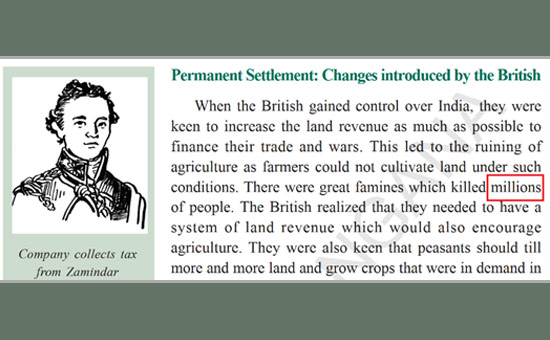
After our team sent this critique to the State, the Editorial Board replaced one word “thousands” by the word ‘millions” 1. While this is welcome, the text makes it appear that the British rule was benevolent to India. That view needs to be refuted and completely restated that the British were disinterested in the welfare of India!
We can also learn from the West. For example, to memorialize the Jewish Holocaust (where close to 6 Million Jews were deliberately killed in Europe during 1941-45), the US has a museum – called the United States Holocaust Memorial Museum in Washington, D.C. In addition, almost every child going to school in this world likely learns about the Holocaust.
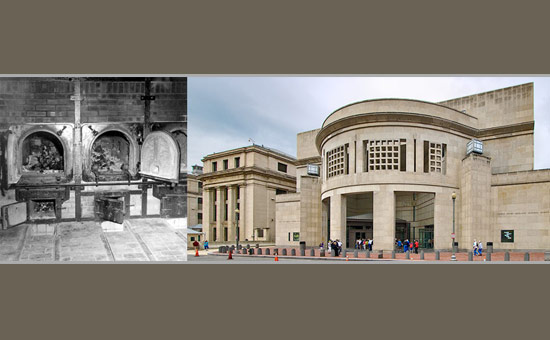 The infamous Gas Chambers of the Nazi Holocaust Ref 8n Holocaust Museum USA Ref 9.
The infamous Gas Chambers of the Nazi Holocaust Ref 8n Holocaust Museum USA Ref 9.
India should establish monuments in West Bengal and other places to memorialize this genocide that killed as many people as the World War I (40 Million), and World War II (60 Million).
What were factors contributing to an increased incidence and severity of famines during the British rule of India? We will review this in a future article.
References
1. Social Studies, Class VIII, Hyderabad: SCERT, Telangana, 2018.
2. M. Davis, Late Victorian Holocausts: El Niño Famines and the Making of the Third World, Verso Books, 2017.
3. F. Magdoff, “Late Victorian Holocausts: El Niño Famines and the Making of the Third World. By Mike Davis 2001. Verso, London and New York,” Renewable Agriculture and Food Systems, vol. 20, pp. 190-192, 2007.
4. “Timelines of Major Famines in India during British Rule.” (Online).
5. W. W. Hunter, “Annals Of Rural Bengal,” vol. 1, 1883.
6. M. Mukerjee, Churchill’s Secret War: The British Empire and the Ravaging of India during World War II, India Penguin, 2018.
7.”Bengal famine of 1943″. To read Bengal famine and Responsibility for Holocaust
8. G. Will, “A showcase of the vilest and noblest manifestations of humanity,” 26 April 2018.
You may like
articles
CONSTRUCTING GENDER IDENTITIES IN DEATH : RETHINKING MORTUARY ARCHAEOLOGY THROUGH THE EVIDENCE OF SINAULI
Published
1 day agoon
October 30, 2025By
Suprabho Roy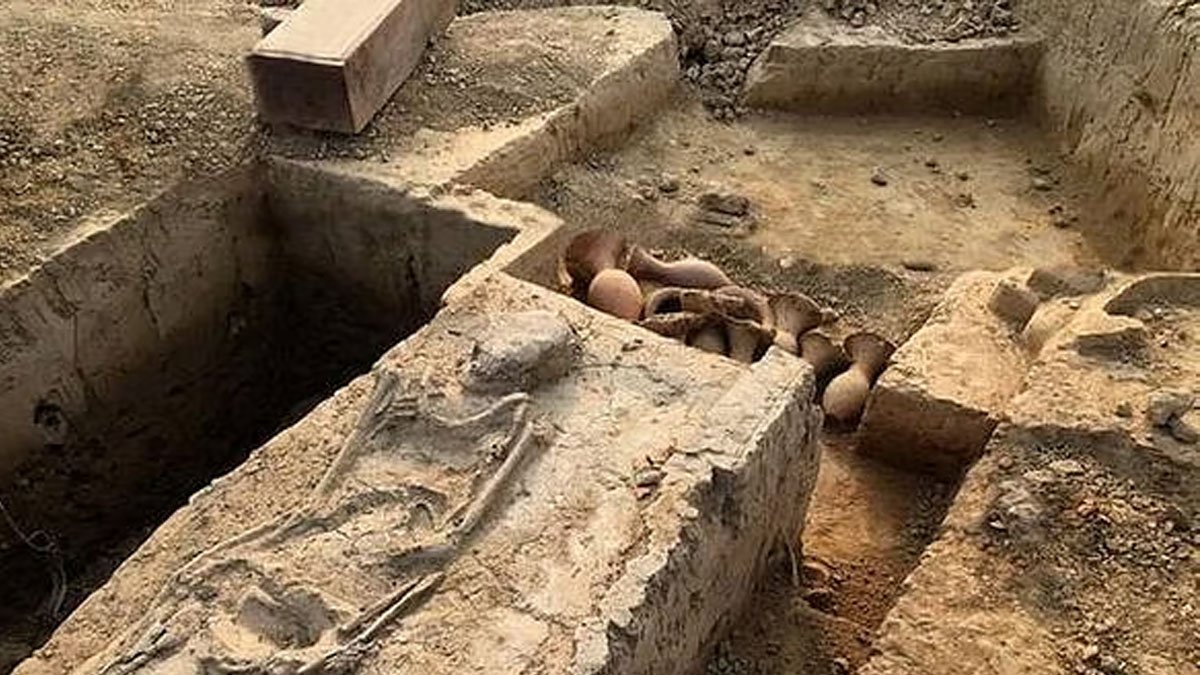
The archaeological site at Sinauli in Uttar Pradesh has provided significant insight into ancient burial practices, gender identities, and social hierarchy in South Asia. The evidence uncovered at Sinauli challenges long-held assumptions and offers fresh perspectives on mortality, gender roles, and elite status in ancient Indian society.
Location and Historical Context
Sinauli is situated in the Baghpat district of western Uttar Pradesh, lying within the fertile Upper Ganga-Yamuna Doab region. It is associated with the Ochre Coloured Pottery (OCP) culture, which dates back to the early second millennium BCE. This site gained attention due to its unique burial practices, especially those involving women and the material assemblages found with their graves.
Overview of Excavations
The Sinauli excavations were initiated in 2005 under archaeologist D.V. Sharma, and further work was conducted in 2018 by Dr. Sanjay Manjul. In 2005, archaeologists uncovered 116 burials, typically oriented north-south, along with ochre-colored pottery. The 2018 excavations revealed even greater complexity, including wooden coffins adorned with copper sheets, rectangular boxes, antenna swords, helmets, shields, pots, and controversial wheeled vehicles—leading to a debate over whether these were chariots or carts.
Types of Burials
Sinauli yielded four primary burial types:
– Symbolic burials without skeletons.
– Primary burials with full skeletons.
– Secondary or fragmented burials.
– Multiple burials containing fragmented remains.
Gender Distinctions in Burial Practices
A significant contribution of Sinauli is its challenge to conventional views on gender and mortuary archaeology. Certain burials, notably those identified by Asko Parpola, show that elite women were sometimes interred in richly decorated coffins with martial symbols such as swords, shields, and wheeled vehicles. Coffins for women featured steatite inlay and were often covered, in contrast to men’s coffins, which generally had copper sheathing and were left uncovered. Such differentiation suggests elaborate symbolism surrounding gender and possibly ritual seclusion or heightened sacredness for women in death.
One highly debated aspect is the absence of feet in Burial-1, which might suggest less earthly mobility or represent a transformation from earthly to transcendent status.
Rethinking Weaponry and Gender
The presence of weapons, such as copper antenna swords and shields, in women’s graves at Sinauli has prompted scholars to reconsider rigid notions of gender roles. These martial objects could signal the dead’s authority—either as warriors or ritual leaders—thus broadening our understanding of gender within ancient funerary contexts. Interestingly, such elaborate martial symbolism is less prevalent in the male burials at Sinauli.
Symbolism of Coffins and Elite Status
Coffins at Sinauli, rare in South Asian archaeology, were more than mere containers; they symbolically transformed the deceased into sacred beings. Their intricate decoration reflects considerable labor, resources, and craftsmanship, indicating elite status and the possibility of gendered authority within the social hierarchy.
Conclusions and Implications
The burial evidence from Sinauli emphasizes material distinctions that reveal social stratification, hierarchy, and constructed gender roles. While the idea of women warriors remains debated, the presence of martial symbols with elite women points towards complex rituals and conceptions of social power in death. Sinauli thus stands out as a crucial site for rethinking gender identities, social class, and the symbolic aspects of funerary practices in ancient India.
articles
Rediscovering Sutanuti: IHAR WB CHAPTER’S Second Heritage Walk
Published
2 days agoon
October 29, 2025By
Suprabho Roy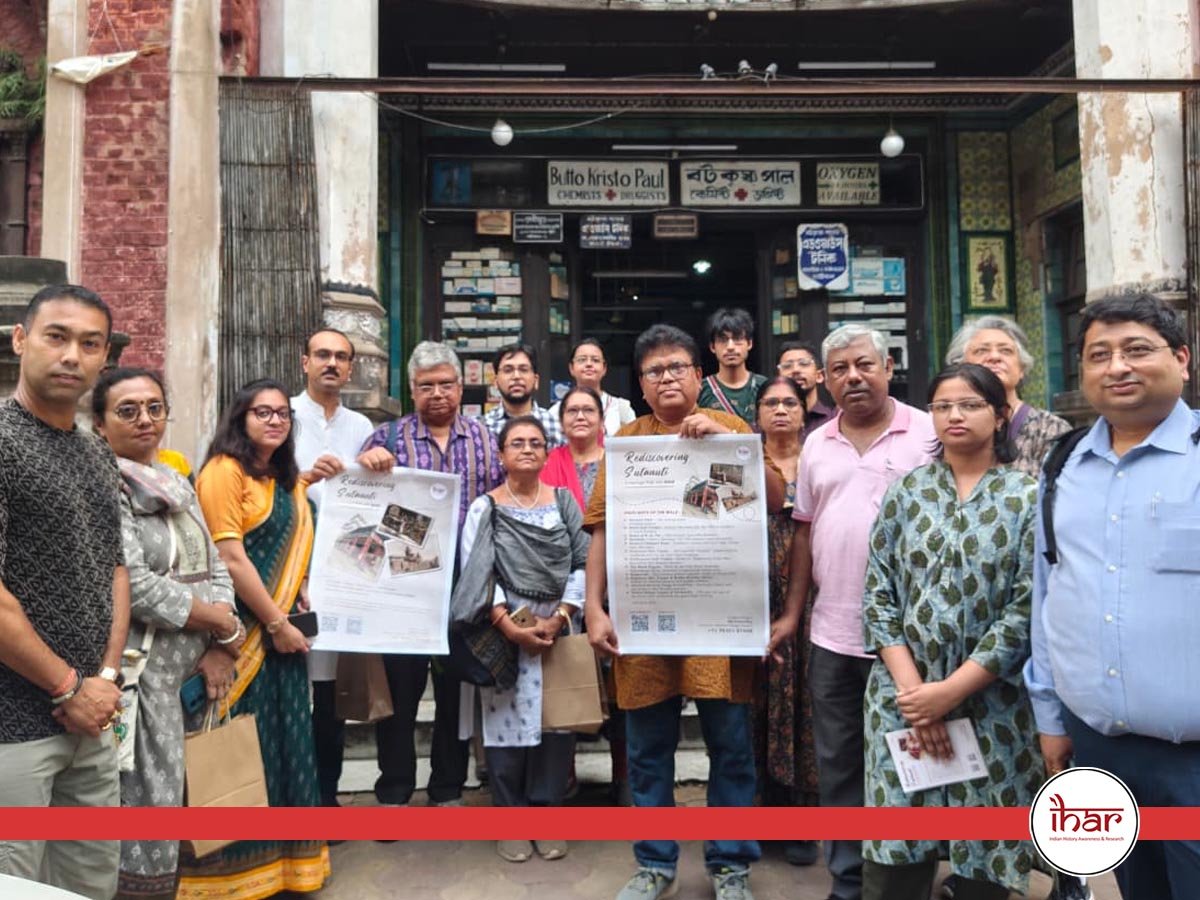
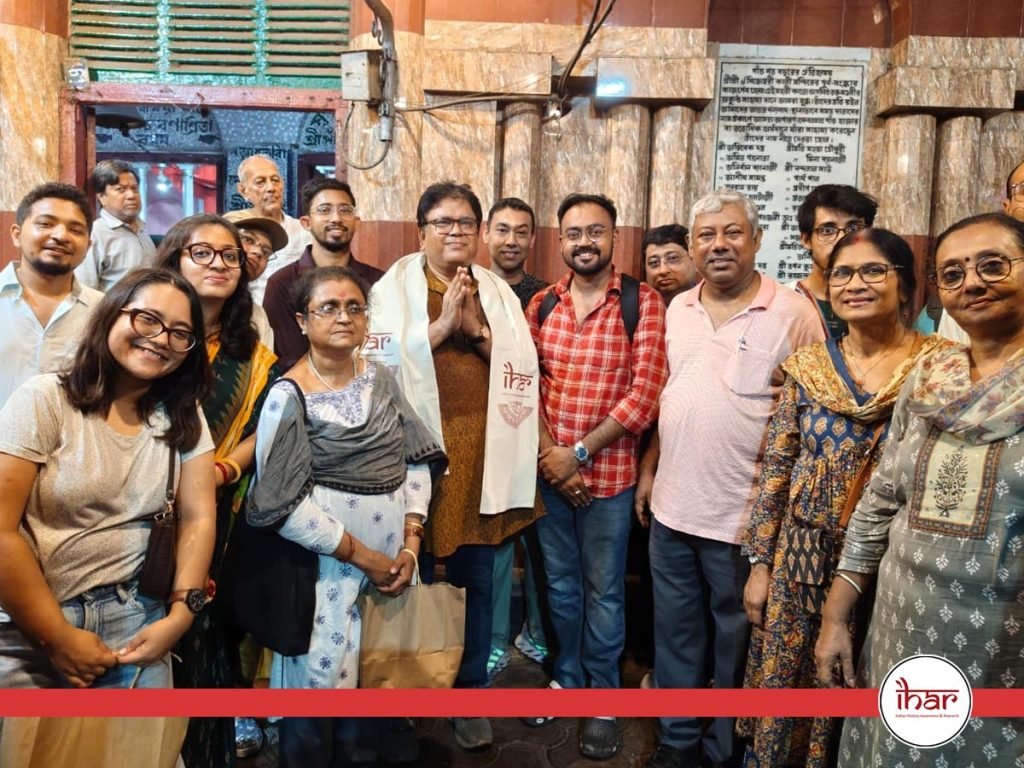
On Sunday, October 26, 2025, the organization Indian History Awareness and Research (IHAR) embarked on its inaugural heritage walk, titled “Rediscovering Sutanuti.”
Dedicated to the study, research, preservation, and public awareness of Indian history, IHAR has long aimed to connect people with the layers of India’s historical and cultural legacy. This heritage walk marked a significant step in that direction.
Why Sutanuti?
The choice of Sutanuti as the focus of IHAR’s first heritage walk was profoundly symbolic.
It was here, on August 24, 1690, that Job Charnock, an officer of the East India Company, is believed to have landed—a moment that would reshape the destiny of Bengal and, indeed, the entire Indian subcontinent.
Although the Company had visited Sutanuti earlier, it was this arrival that initiated a chain of events culminating in nearly two centuries of colonial rule, lasting until August 14, 1947.
On November 10, 1698, the East India Company entered into an agreement with the Sabarna Roy Chowdhury family, acquiring the zamindari (lease rights) of three villages—Kalikata, Govindpur, and Sutanuti—for an annual rent of ₹1300.
This agreement laid the foundation for the rise of Calcutta, though Charnock himself never witnessed it, having passed away in 1693.
Over 335 years later, the Sutanuti of 1690 and that of 2025 appear worlds apart.
Historians still debate the precise locations of Sutanuti Ghat, where Charnock’s ship is believed to have anchored, and Sutanuti Haat, the bustling market once held twice a week for the sale of cotton yarns and threads.
It was this very market that enriched the Seths and Basaks, the early inhabitants of Calcutta, through the textile trade.
Though no physical trace of that port or market survives today, scholars generally agree that Sobhabazar corresponds to the original Sutanuti region.
Accordingly, IHAR chose this locality for its first heritage walk—a symbolic return to the city’s historical roots.
The legacy of Sutanuti lives on in names like Haatkhola (“the open market”), a term derived from the old marketplace and still preserved in local designations such as Haatkhola Post Office.
Similarly, through the efforts of Sutanuti Parishad, the Sobhabazar Metro Station was officially renamed “Sobhabazar Sutanuti.”
Even in the absence of the old market, these surviving names echo the deep emotional and cultural resonance Sutanuti continues to hold for the people of Calcutta and Bengal.
⸻
Highlights of the Walk
The heritage walk took participants on a journey through Sutanuti’s remaining landmarks and forgotten corners, each revealing a fragment of Calcutta’s layered past.
B. K. Pal’s House
The first stop was the residence of B. K. Pal, the pioneering Bengali manufacturer and seller of medicines in the 19th century.
His most celebrated creation, Edward Tonic (1887), became a household remedy for fevers and stomach ailments—common and often fatal in colonial Calcutta—earning him a lasting place in Bengal’s medical history.
Shwet Kali Temple
Participants then visited the Shwet Kali Temple on Sobhabazar Street, nearly 300 years old and among the three oldest white Kali temples in Bengal.
Originally a shrine for dacoits, it later became a site of domestic worship. The deity here is distinctive—white in color, two-armed, tongue inside the mouth, and standing over Virupaksha and Kalbhairav, without the usual garland of severed heads.
Raja Janakinath Ray’s Mansion
The walk next stopped at the grand mansion of Raja Janakinath Ray of the Bhagyakul Ray family, prosperous traders from Dhaka and Calcutta.
Built in the 19th century, a part of this palatial building now serves as the Jorabagan Traffic Guard office, while descendants of the Ray family still occupy another section.
Chitpur Road (Rabindra Sarani)
Participants then walked along Chitpur Road, now Rabindra Sarani, regarded as Calcutta’s oldest road, dating back nearly 500 years.
Originally extending from Chitpur to Kalighat and later to Halisahar, the path once cut through dense forests inhabited by wild animals and robbers—an incredible contrast to today’s bustling thoroughfare.
Rameshwar Shiva Temple
Next came the Rameshwar Shiva Temple, built around 1700 by Nandaram Sen, the first native tax collector under the British official Mr. Sheldon.
Standing 80 feet tall, the temple mirrors the Aatchala style of the Kalighat Kali Temple and houses a six-foot-high Shivalinga.
Kumartuli and the Artisans
The walk then entered Kumartuli, where artisans were crafting Jagaddhatri idols.
Participants met Amit Ranjan Karmakar, a rare collector and restorer of vintage radios, tape recorders, and gramophones—all maintained in working order.
Radhagobinda and Baneshwar Shiva Temples
The Radhagobinda Temple and the Aatchala Baneshwar Shiva Temple, built by Bonomali Sarkar, another British-era official, were the next stops.
While the Radhagobinda Temple remains in fair condition, the Baneshwar Shiva Temple lies in neglect, its once-fine terracotta work fading amid weeds.
Kaviraj Gangaprasad Sen’s House
The group then visited the home of Kaviraj Gangaprasad Sen, the eminent 19th-century Ayurvedic physician who migrated from Bikrampur (Dhaka) in 1840.
Revered for his skill, he once treated Sri Ramakrishna Paramahansa and famously predicted that the saint’s illness was incurable—a prophecy now part of Bengal’s spiritual lore.
Dhakeshwari Temple
The Dhakeshwari Temple in Kumartuli houses a 800–1000-year-old ashtadhatu idol, originally enshrined in Dhaka by King Ballal Sen.
After Partition, the idol was smuggled to Calcutta in 1948 and relocated to its present temple in 1950, where it continues to be worshipped.
Madanmohan Temple
The majestic Madanmohan Temple, established in 1761 by Gokul Chandra Mitra, came next.
Once spread across 56 bighas, the temple houses a black stone deity associated with a legend involving King Chaitanya Singh of Mallabhum.
Its Raas and Annakut festivals are still celebrated annually.
Siddheshwari Mata Temple and the Black Pagoda
The final stop was the Siddheshwari Mata Temple in Baghbazar, believed to be over 500 years old.
Founded by a monk named Kalibor, it later came under the worship of the Chakraborty family and their descendants.
The goddess, affectionately known as “The Ginni Maa of Baghbazar,” was revered even by Girish Ghosh and Sri Ramakrishna, the latter once offering tender coconuts for the recovery of Keshab Chandra Sen.
Across the street stands the Black Pagoda, constructed between 1725 and 1730 by Govinda Ram Mitra, the second native revenue collector after Nandaram Sen.
Standing originally over 165 feet tall, it once surpassed even the Ochterlony Monument (Sahid Minar) in height before being partially destroyed in the cyclone of 1737.
Its surviving fragments still whisper tales of Sutanuti’s lost grandeur.
⸻
A Journey Through Memory
Thus concluded IHAR’s first heritage walk—a journey through the forgotten heart of Sutanuti, where every lane, temple, and crumbling mansion still bears the faint echo of Calcutta’s beginnings.
Though time has erased much of the physical landscape, the spirit of Sutanuti endures—in its names, in its memories, and in the hearts of those determined to rediscover it.
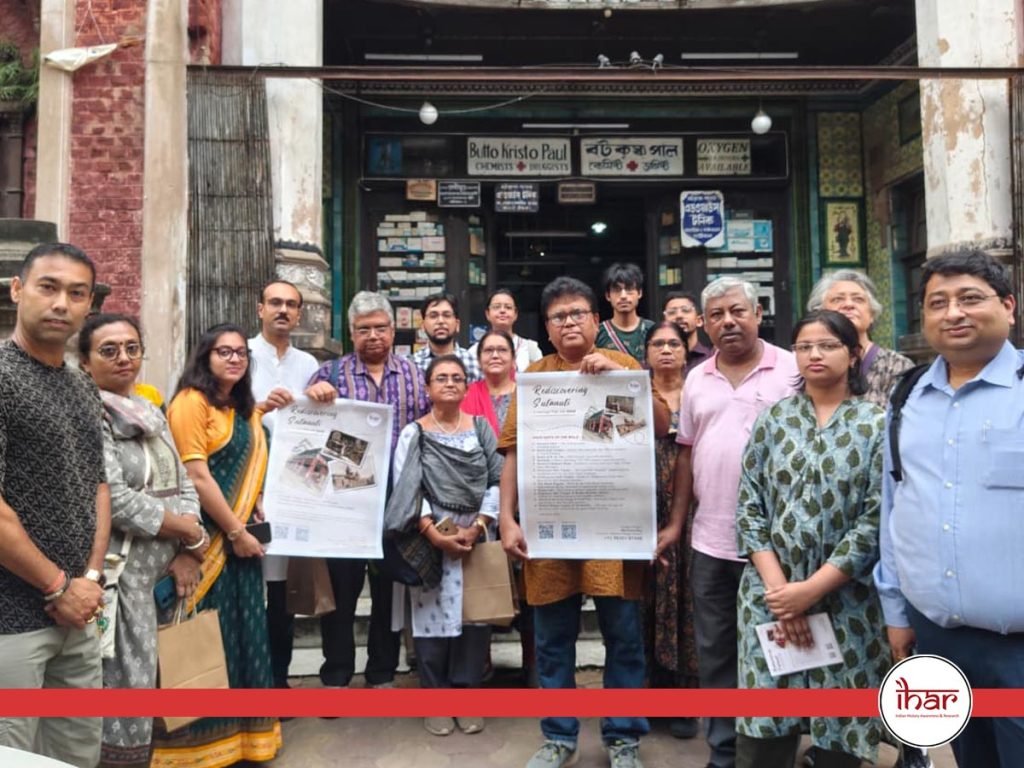
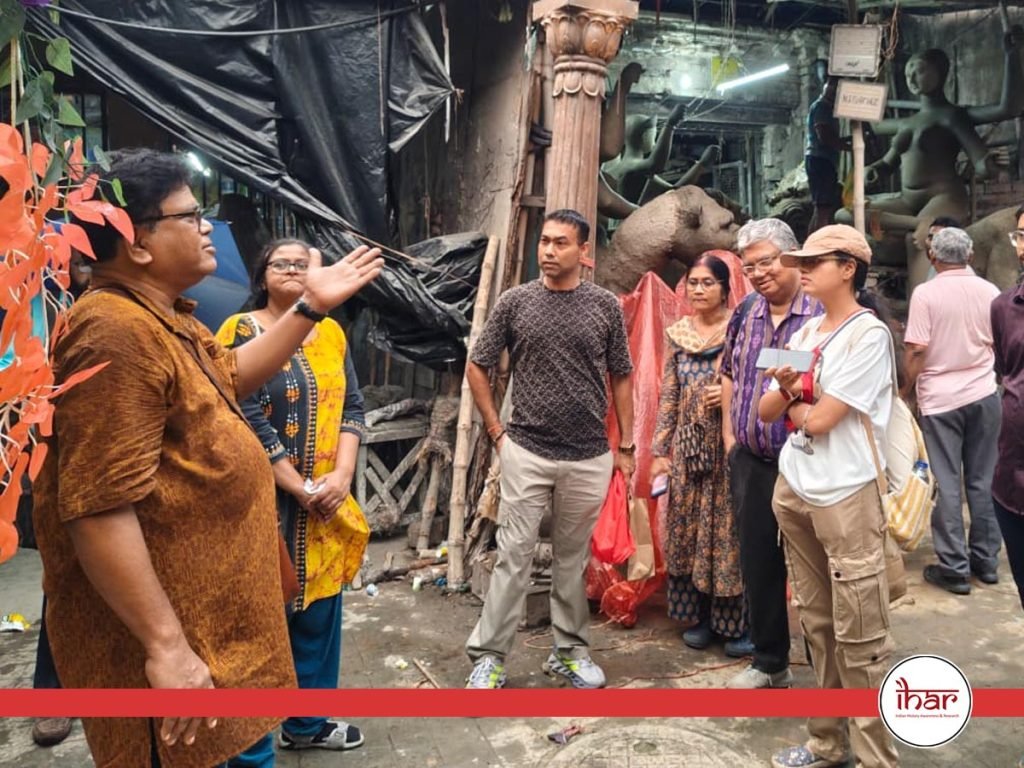
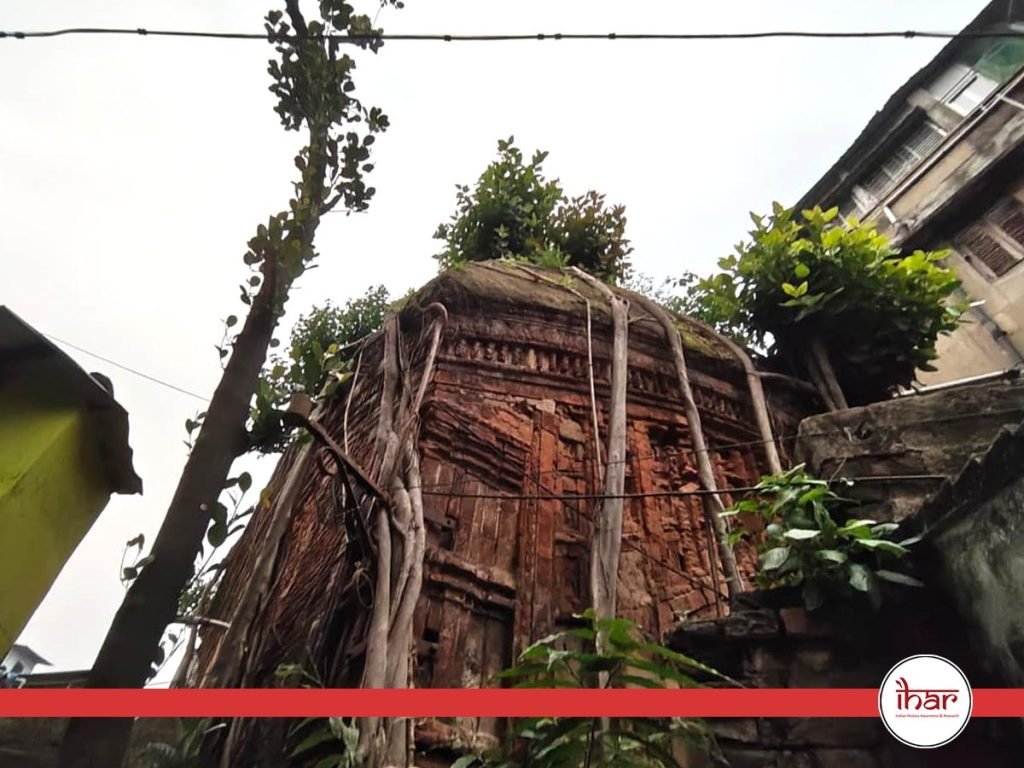
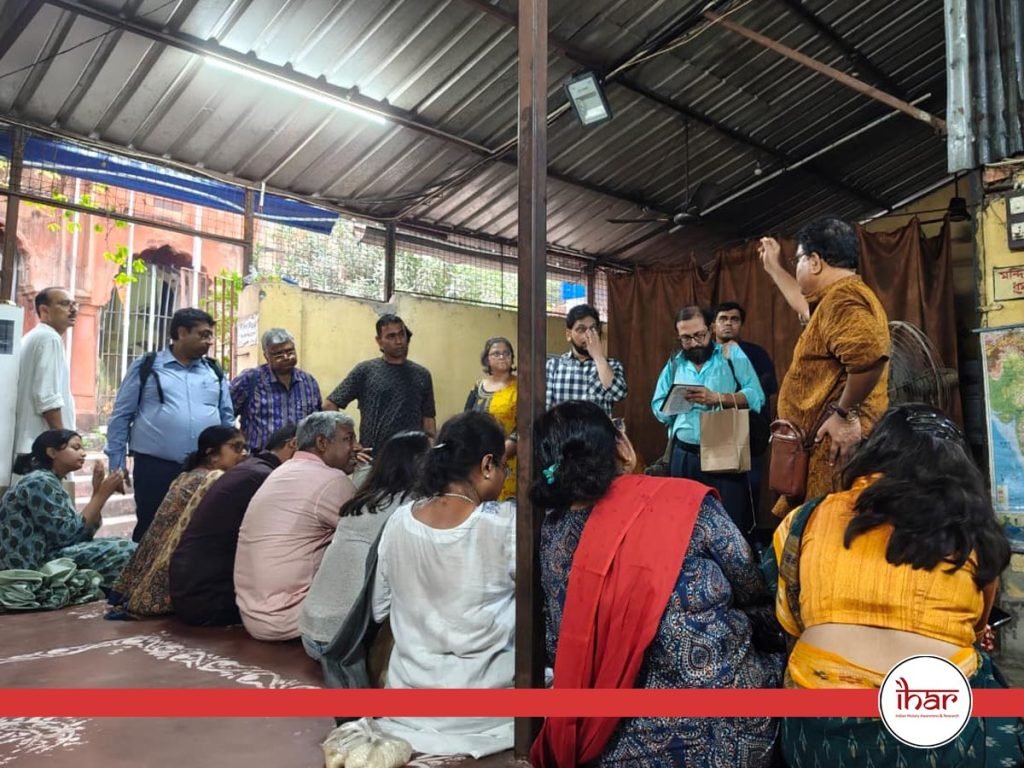
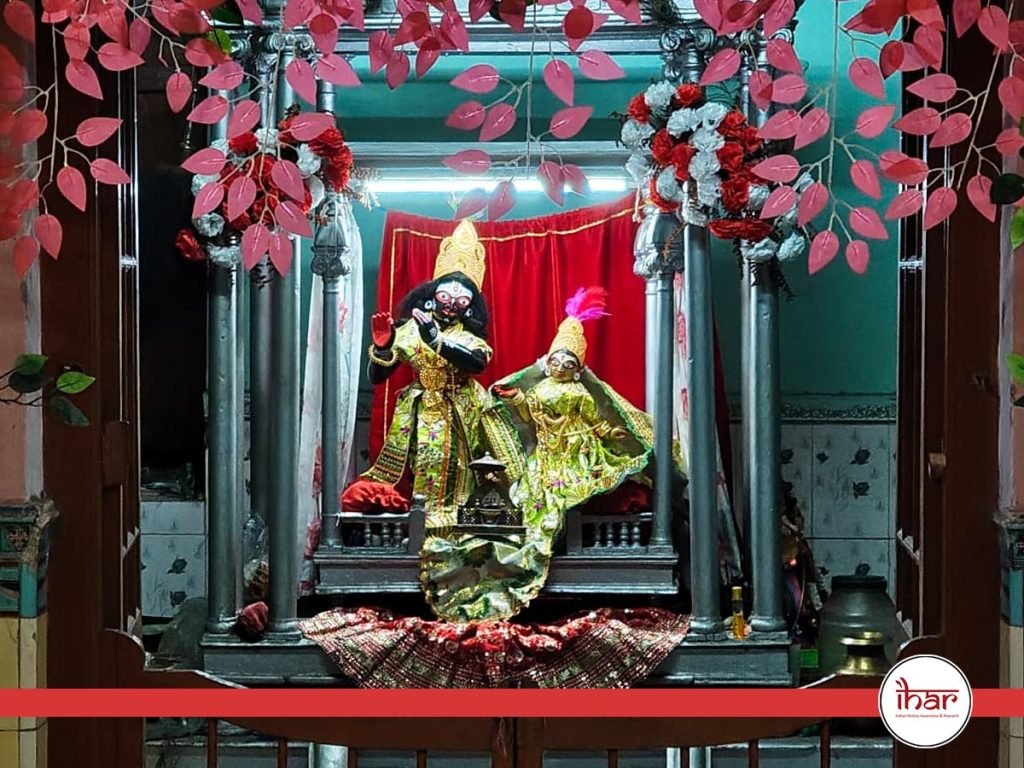
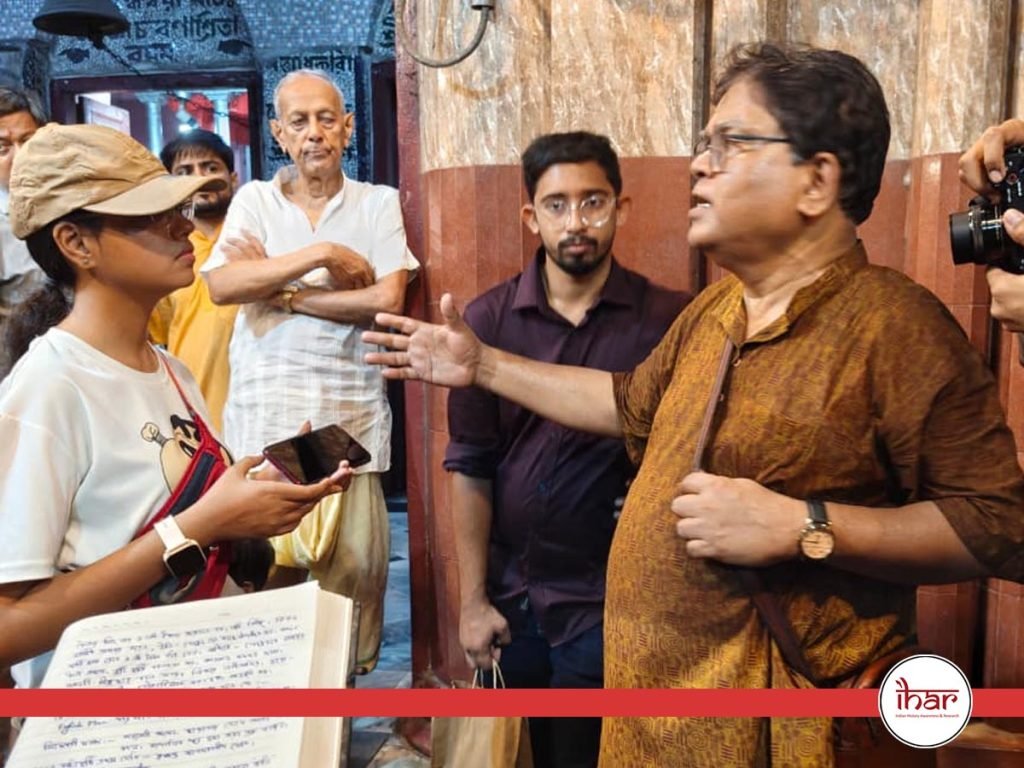
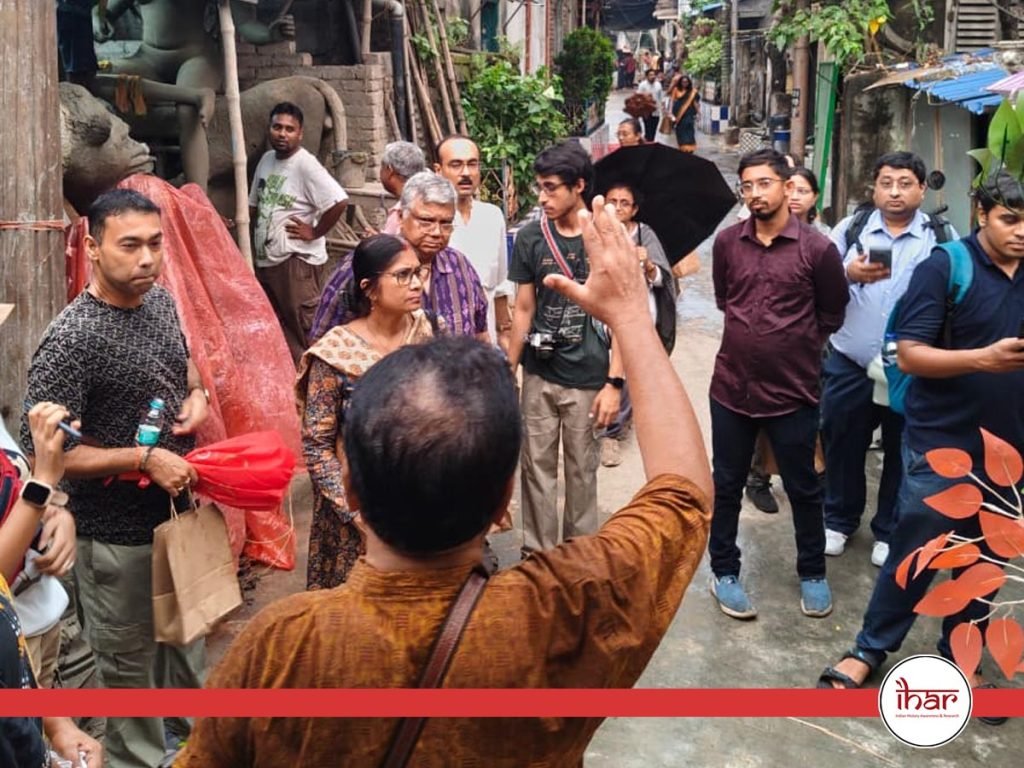
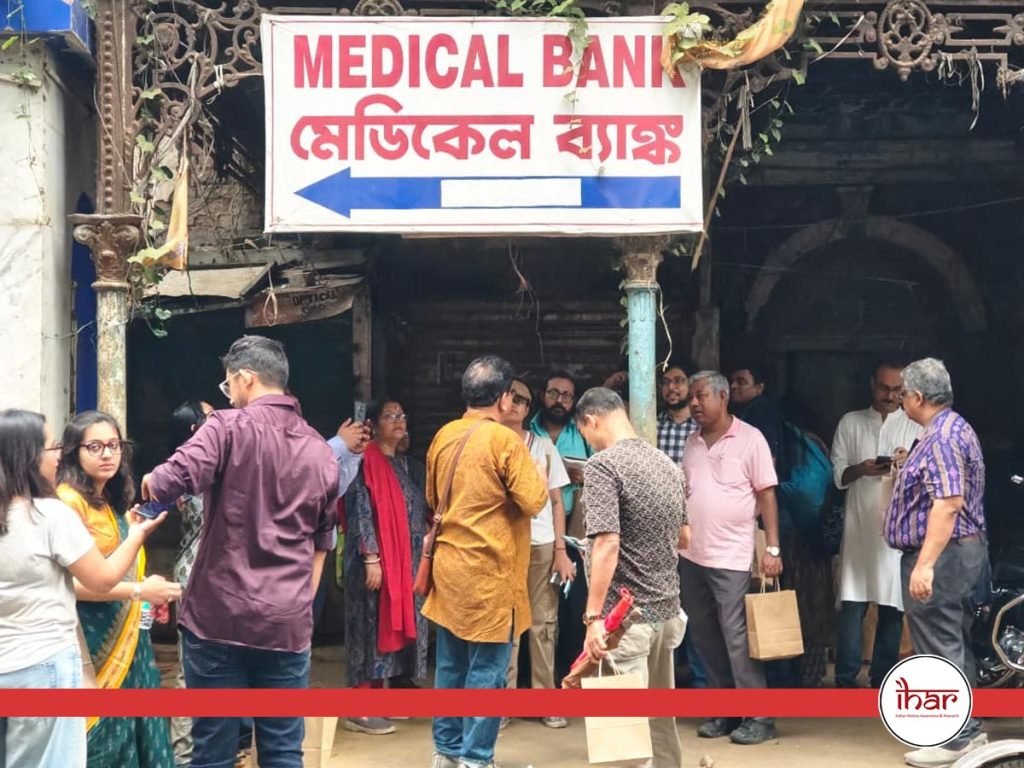
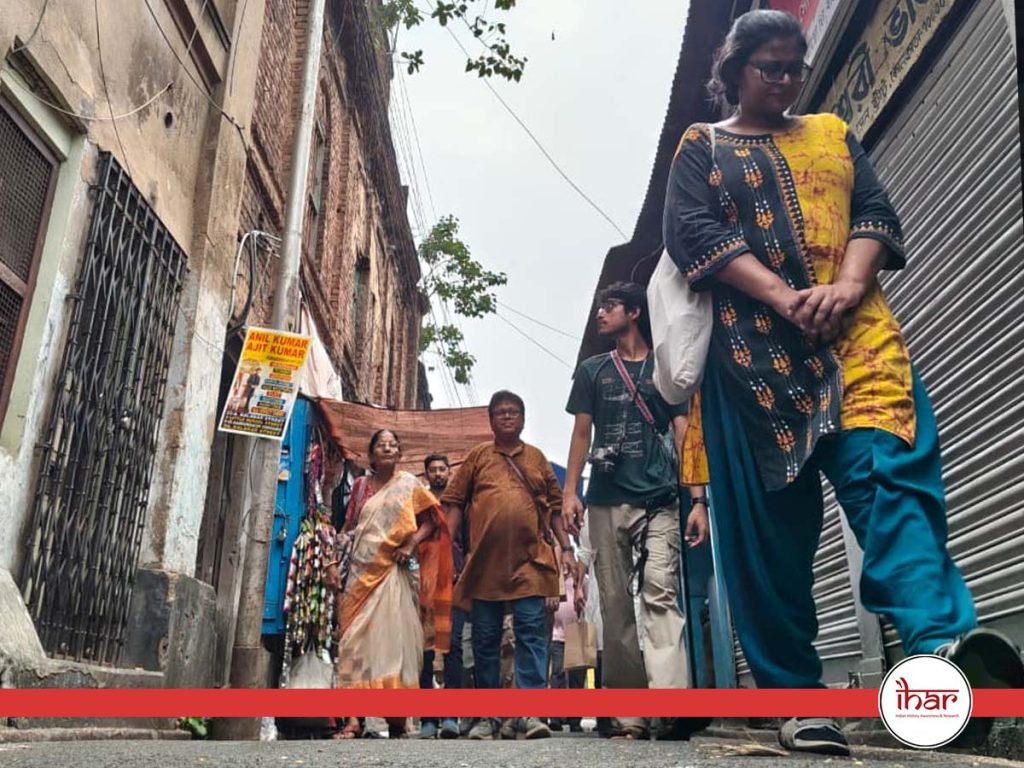
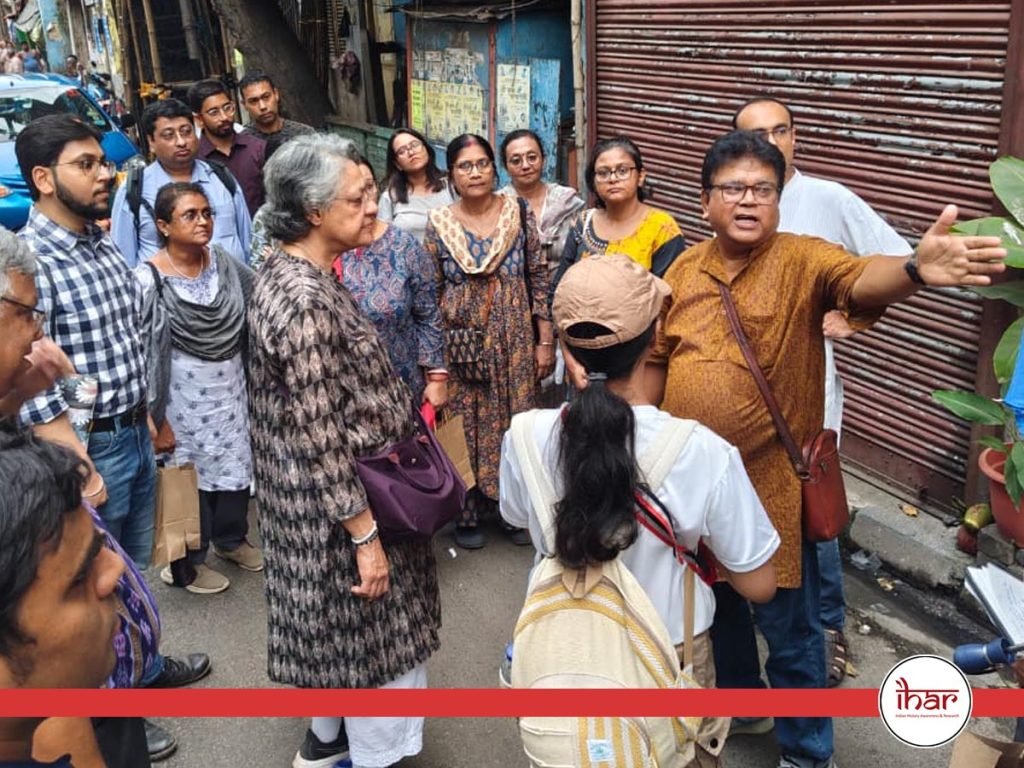
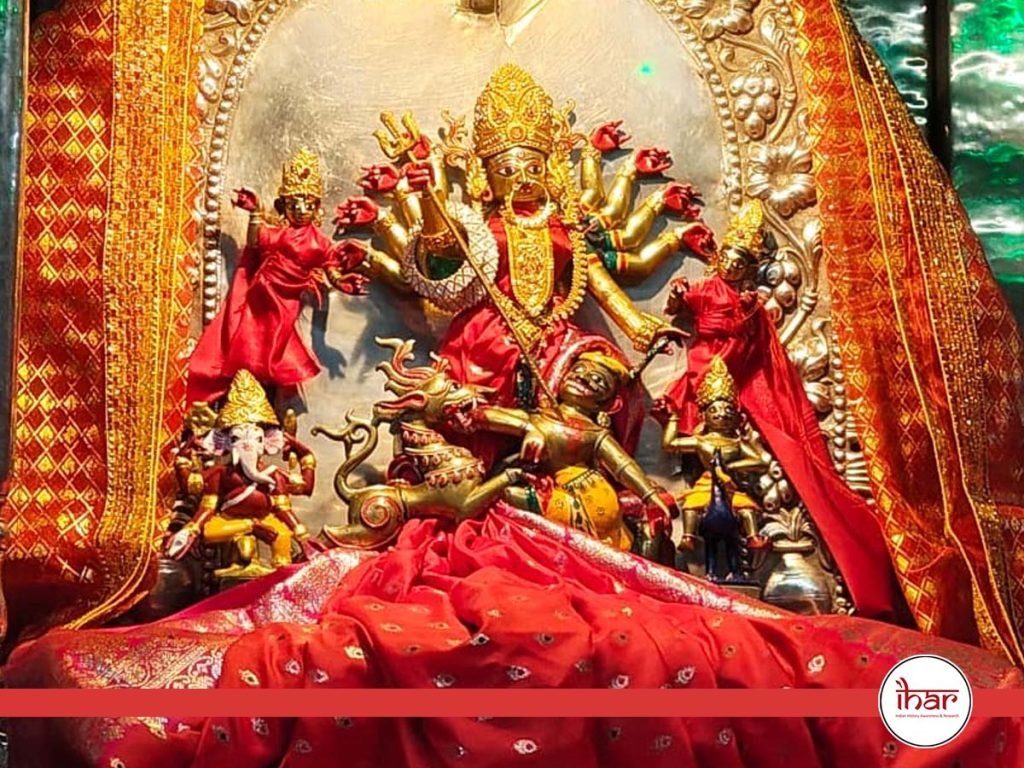
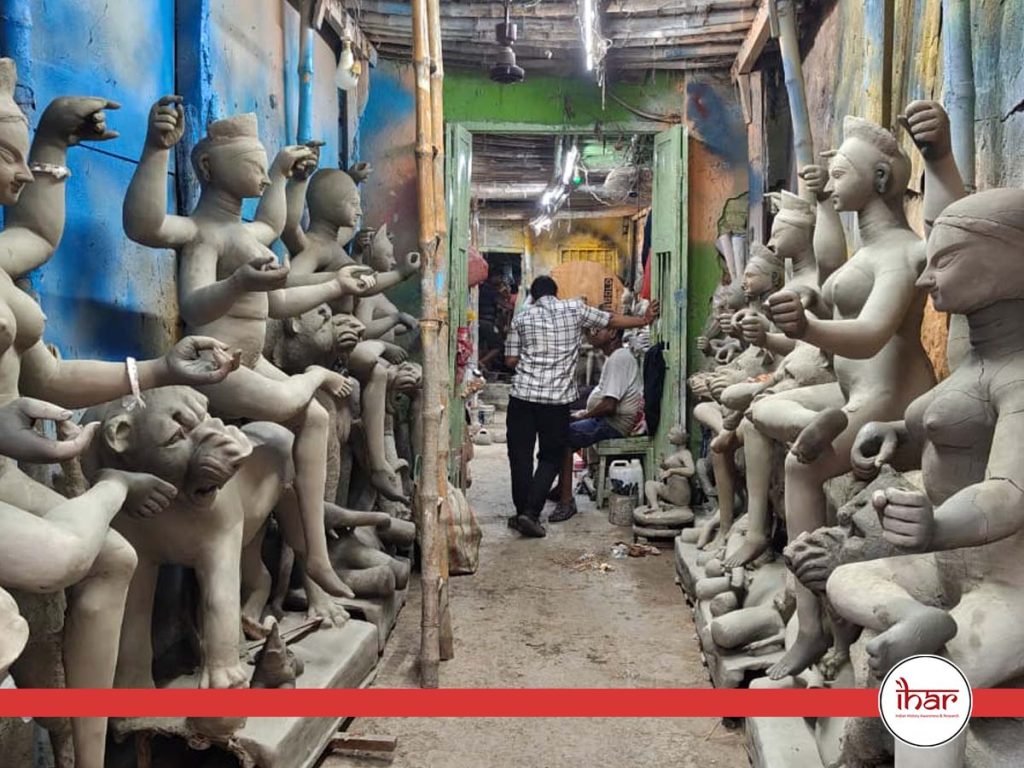
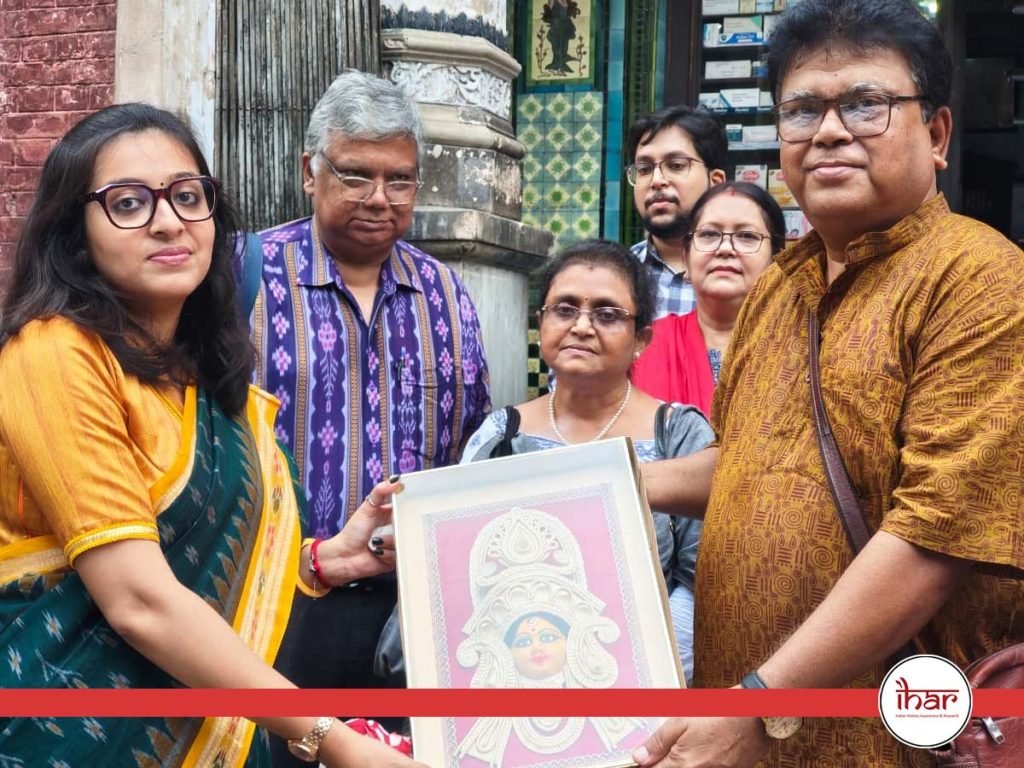
articles
Preserving Bengal’s Intellectual Legacy: IHAR West Bengal Chapter Undertakes Detailed Survey of Uttarpara Joykrishna Mukherjee Public Library
Published
1 month agoon
September 20, 2025By
Suprabho Roy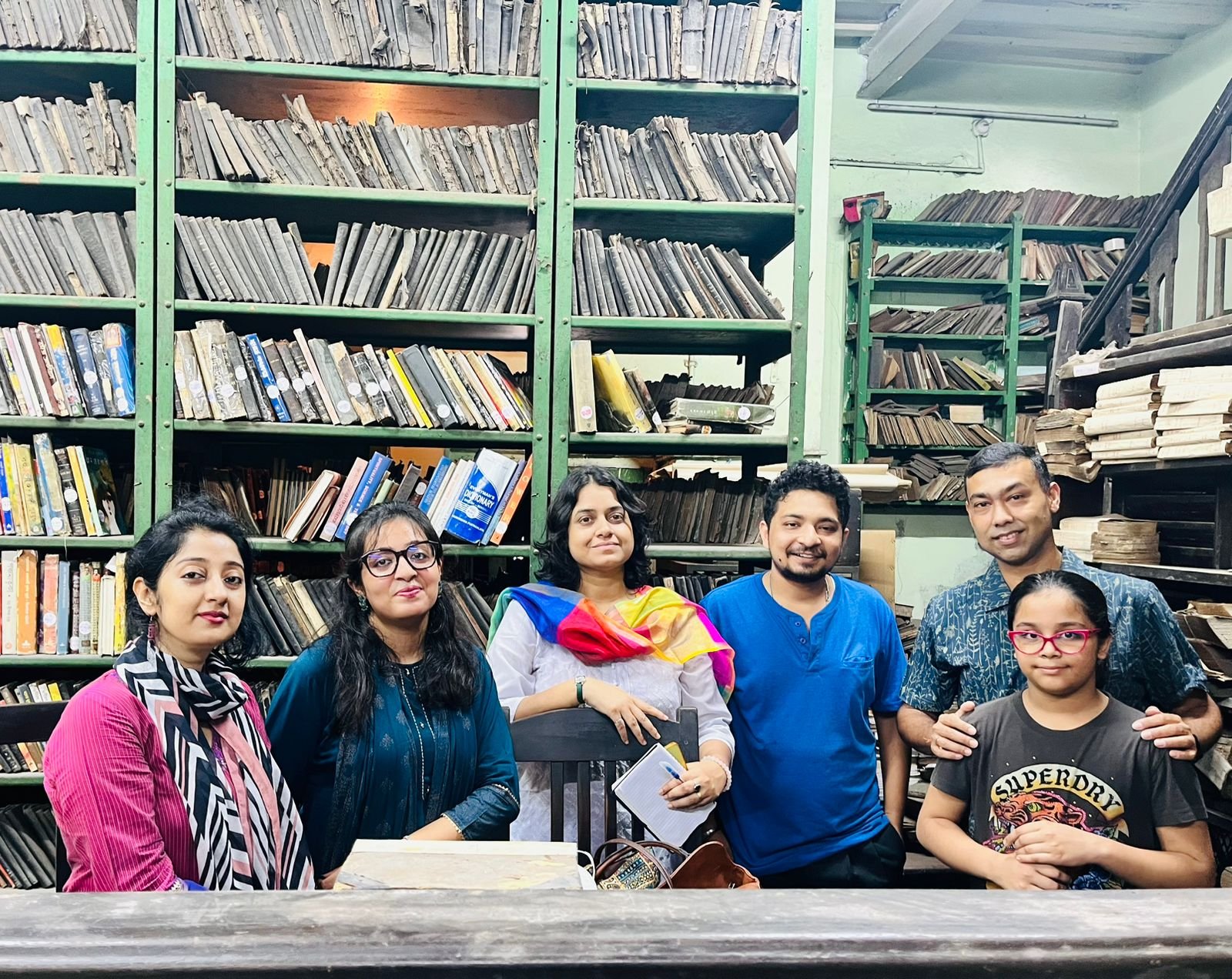
The site visit report on the Uttarpara Joykrishna Mukherjee Public Library is a comprehensive survey conducted by the Indian History Awareness Research (IHAR) team, highlighting the library’s unparalleled status as a treasure trove of rare manuscripts, books, and archival materials crucial for understanding Bengal and India’s cultural and intellectual heritage. This survey was prompted by concerns raised by the descendants of Shri Joykrishna Mukherjee regarding the fragile state of invaluable collections within this historic institution. As an independent organization committed to heritage conservation, IHAR assessed the library to recommend steps for its safekeeping, digitization, and modernization, thereby continuing the library’s legacy as a pillar of learning and knowledge since its inception in 1859.
The project was overseen by Project Director Shri Surya Sarathi Roy, Director of India Operations at IHAR. The IHAR team comprised notable members including Shri Bhujang Bobde (Director, Karnataka Epigraphic Conservationist Archives), Ms. Manideepa Basu (Executive Member, Indian Museum), Ms. Mouli Roy (Executive Member, National Library), and Shri Sumit Ganguly (Co-Convenor Academic, IHAR), among others. Their collective expertise in history, museology, conservation, and law was pivotal in conducting a detailed evaluation of the library’s current condition and proposing actionable measures for its preservation.
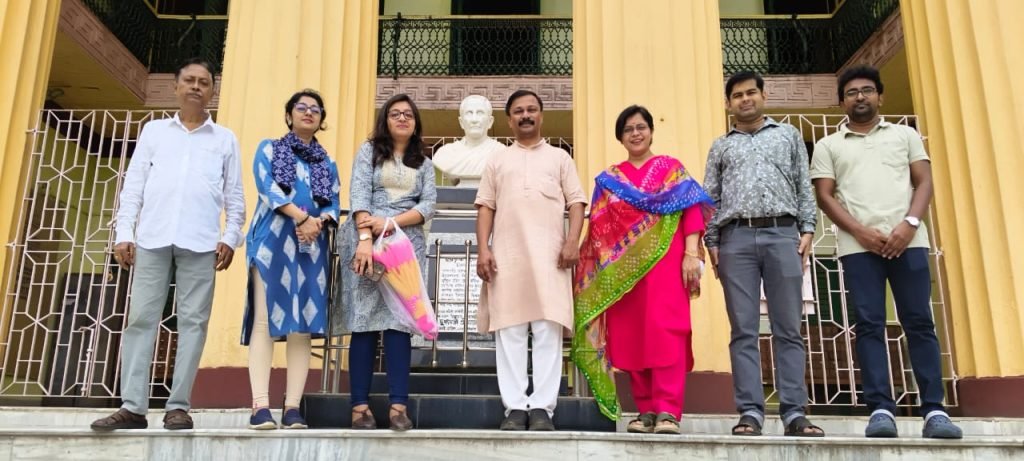
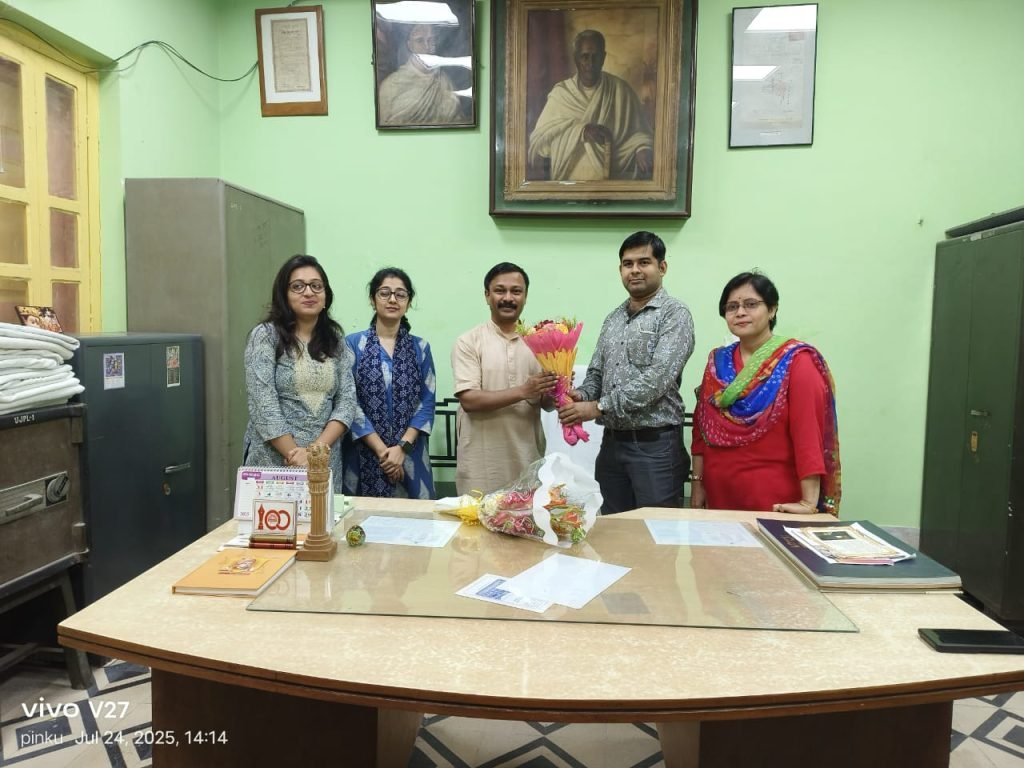
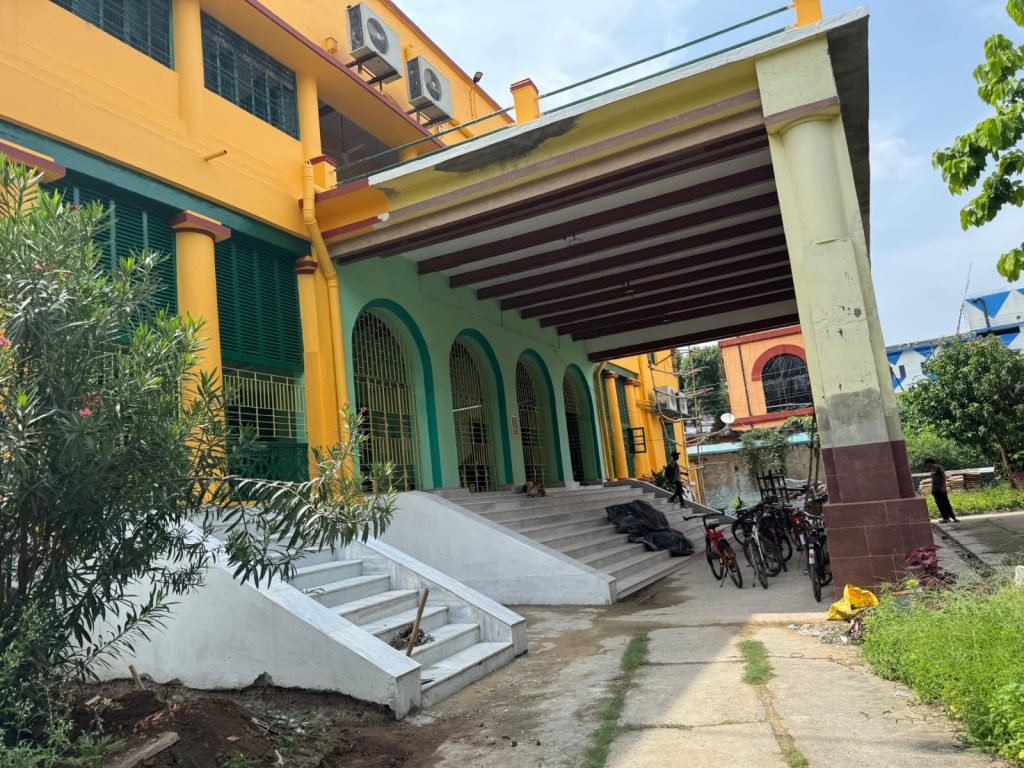
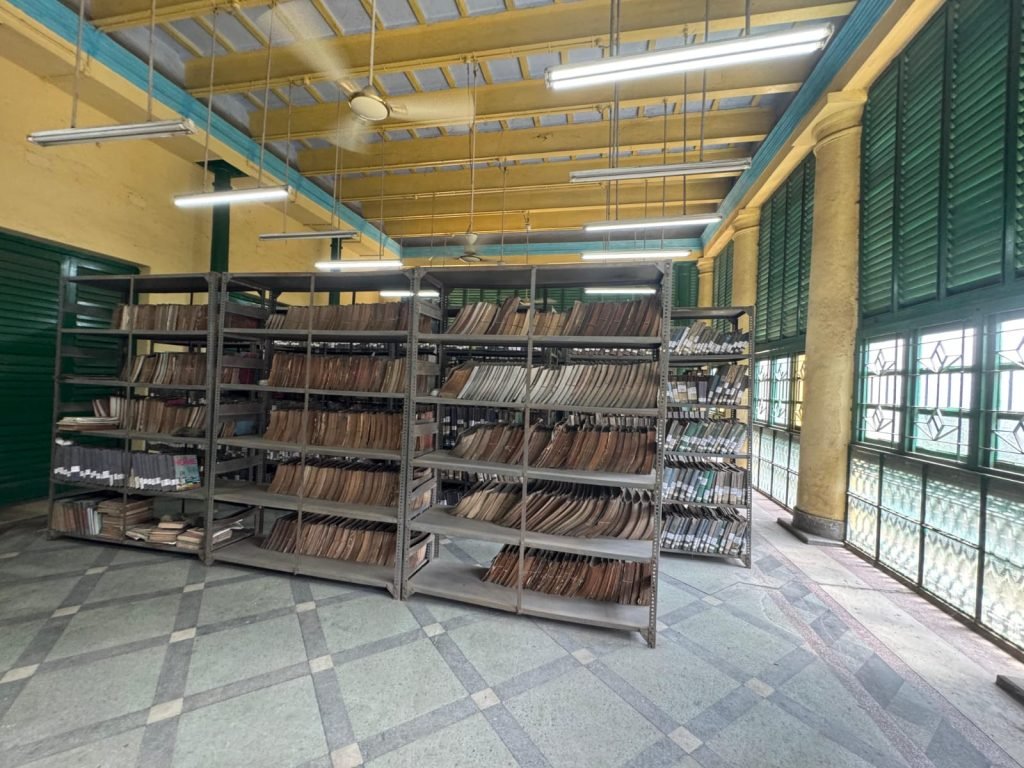
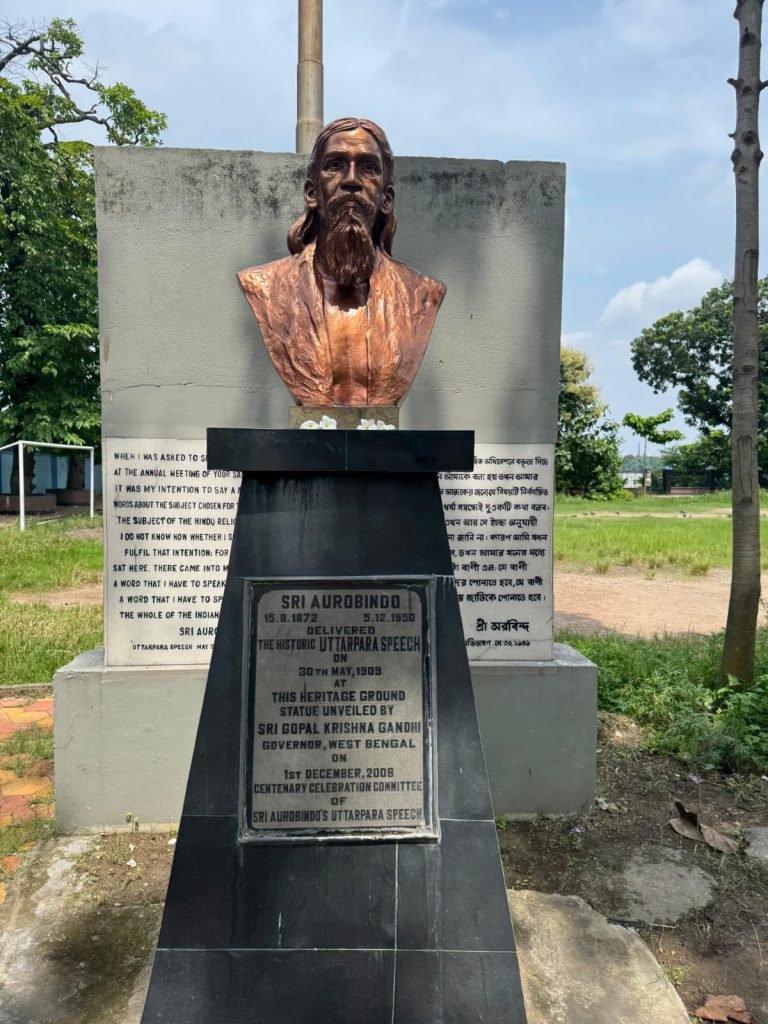
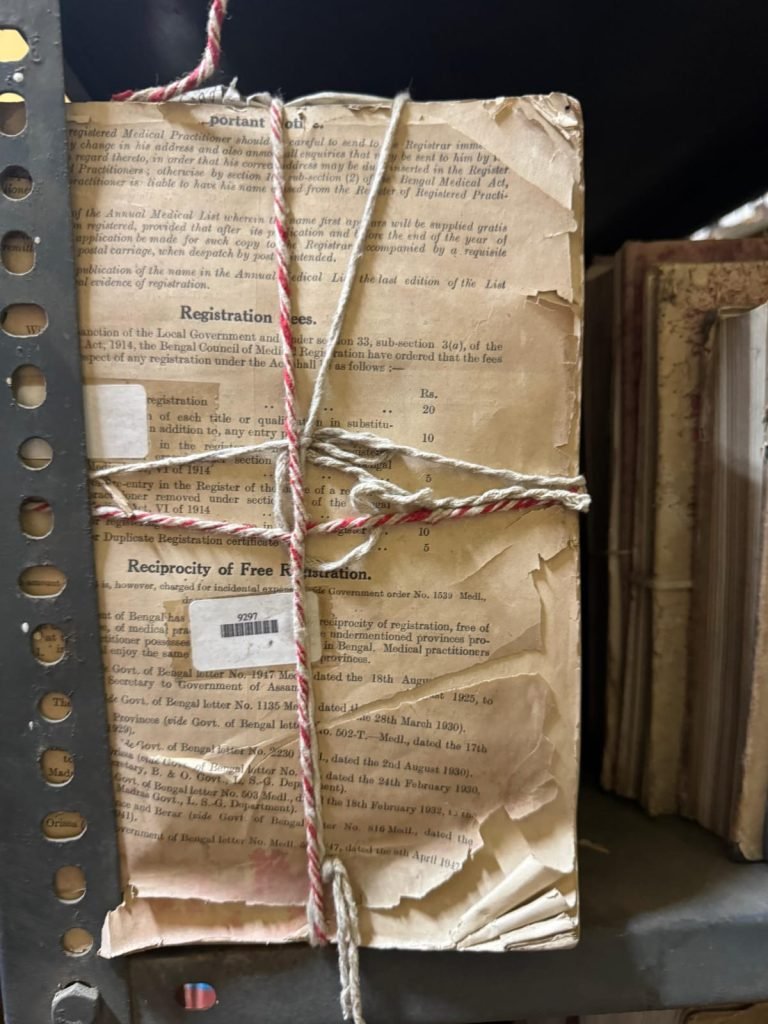

CONSTRUCTING GENDER IDENTITIES IN DEATH : RETHINKING MORTUARY ARCHAEOLOGY THROUGH THE EVIDENCE OF SINAULI

Rediscovering Sutanuti: IHAR WB CHAPTER’S Second Heritage Walk

Preserving Bengal’s Intellectual Legacy: IHAR West Bengal Chapter Undertakes Detailed Survey of Uttarpara Joykrishna Mukherjee Public Library

Reviving Bengal’s Intellectual Heritage: IHAR West Bengal Chapter Undertakes Detailed Survey of Chaitanya Library in Kolkata

NATIONAL ARCHAEOLOGICAL CONFERENCE IGNITES SCHOLARLY DISCOURSE WITH LAUNCH OF IHAR MP-CG CHAPTER

Bharat Varsh – A Cradle of Civilzation – Panel Discussion

Bringing our Gods back home – A Conversation with Shri Vijay Kumar

Panel Discussion on Sati

Bengal’s Glorious and Diverse Heritage- Traditions and Festivals – Panel Discussion

IHAR – World Heritage Day – April 18th 2025 updates

Debugging the wrong historical narratives – Vedveery Arya – Exclusive podcast

The Untold History Of Ancient India – A Scientific Narration

Some new evidence in Veda Shakhas about their Epoch by Shri Mrugendra Vinod ji

West Bengal’s textbooks must reflect true heritage – Sahana Singh at webinar ‘Vision Bengal’

Bringing our Gods back home – A Conversation with Shri Vijay Kumar
Trending
-

 Events2 years ago
Events2 years agoBharat Varsh – A Cradle of Civilzation – Panel Discussion
-

 Videos2 years ago
Videos2 years agoBringing our Gods back home – A Conversation with Shri Vijay Kumar
-

 Videos11 years ago
Videos11 years agoPanel Discussion on Sati
-

 Events7 months ago
Events7 months agoBengal’s Glorious and Diverse Heritage- Traditions and Festivals – Panel Discussion
-
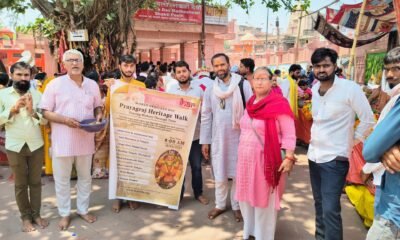
 Events6 months ago
Events6 months agoIHAR – World Heritage Day – April 18th 2025 updates

